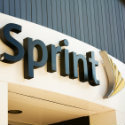
High above Chicago's Soldier Field in the Skyline Suite yesterday, Sprint COO of Technology Gunter Ottendorfer demonstrated "what's next" for the Sprint network -- and it looks like download speeds of up to 230 Mbit/s are in store for 22 mobile devices thanks to three-channel carrier aggregation.
Three carrier aggregation (3CA), which the carrier has deployed on more than 500 cell sites in Chicago, involves combining three LTE carriers -- all in the 2.5 GHz band in Sprint's case -- to boost performance. Sprint Corp. (NYSE: S) CTO John Saw explained in July that "customers should see [peak] speeds in excess of 200 Mbit/s" with 3CA, as long as they have compatible handsets. Current two-channel CA smartphones hit peaks of between 50 Mbit/s and 120 Mbit/s. (See Sprint Plots Ramped-Up LTE.)
Sprint is not alone in its use of three carrier aggregation, as evidenced by Verizon's similar announcement yesterday. Ottendorfer himself noted that the technology is not unique to Sprint, but he said what may set Sprint apart is that it can do three times 20 MHz in the 2.5 GHz band, which provides better capacity, reliability and throughput, he said. "This is easier than doing it cross bands. When you use different bands it gets more complicated. We can do it all in the 2.5 GHz," he said. "I think we have been pioneers and everyone else will follow -- internationally as well." (See Sprint & Samsung Demo 3-Channel Carrier Aggregation.)
Sprint will make this LTE Advanced service -- which it calls LTE Plus -- available "fairly soon" across the US, but Ottendorfer would not provide a specific date for the official launch. "It's live now -- but devices are enabled but not switched on," he said. Sprint is working with Samsung on the infrastructure for the towers and in the devices, he added. When LTE Plus is turned on, the upgrade will be transparent to users via future software releases on those 22 devices, including the Samsung Galaxy Note 7, Galaxy S7 and Galaxy S7 edge.
"In this world of constantly rising data growth, we are able to increase the speed, reliability and capacity for our customers," said Ottendorfer as he demoed 4K streaming video and a speed test where Sprint's LTE Plus network was able to hit 240 Mbit/s. "Applications like 4K streaming video, virtual reality and gaming that need these high-speed, high-capacity networks are becoming commonplace, and we are getting ready for it," he said. "Many applications in the future will need this."
Figure 1: Sprinting Ahead  Sprint COO Gunter Ottendorfer, Sprint COO, Technology, at Soldier Field in Chicago
Sprint COO Gunter Ottendorfer, Sprint COO, Technology, at Soldier Field in Chicago
Sprint has already invested $150 million in the last 14 months in network upgrades in Chicago with "more to come," according to Jim Mills, president of the Illinois/Wisconsin Region for Sprint, and Ottendorfer said the move to LTE Plus is an important building block of future 5G networks.
"The two most important things for 5G will be using high-band spectrum and will be about features like carrier aggregation," said Ottendorfer. "What we do with LTE Plus is use exactly those two."
He went on to explain that 2.5 GHz today is high-band spectrum and everything is below it, but that in the 5G future 2.5 GHz will be low-band spectrum because everything will be above it. "It will be very valuable in the 5G future, and carrier aggregation will be a must for 5G networks."
Sprint is also working with Samsung on the densification of its network -- another stepping stone to 5G. "We are creating denser structures and that is another important aspect for 5G networks," said Ottendorfer. "That's where the value of high-band spectrum comes in. While high-band spectrum doesn't have the propagation of low-band spectrum, you also don't have the interference problems."
Operators will need more capacity on the radio side for 5G, and that's what LTE Plus is about, said Ottendorfer. They will also need more capacity and flexibility in the core network and this is where network functions virtualization (NFV) and evolved packet core (EPC) come into play, he added. "You need to be able to scale in and out based on demand, and that is another important development that Samsung is also working with us on."
Lyle Nyffeler, vice president of network business operations at Samsung Corp. , added that the company is working with Sprint on how to migrate from LTE Plus to 5G in the access and backhaul layers. "The fact that [Sprint has] got such deep spectrum with 2.5 GHz allows them to do some things faster than some other folks," he said. "The groundwork they have laid with LTE Plus and the technologies they can incorporate on the way to 5G -- that's really going to work well for them in the evolution of their network."
— Elizabeth Miller Coyne, Managing Editor, Light Reading
About the Author(s)
You May Also Like











